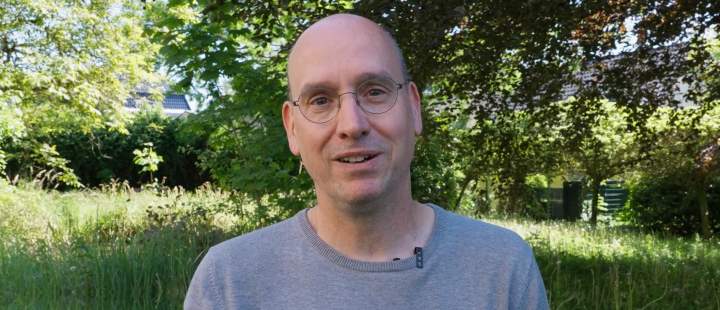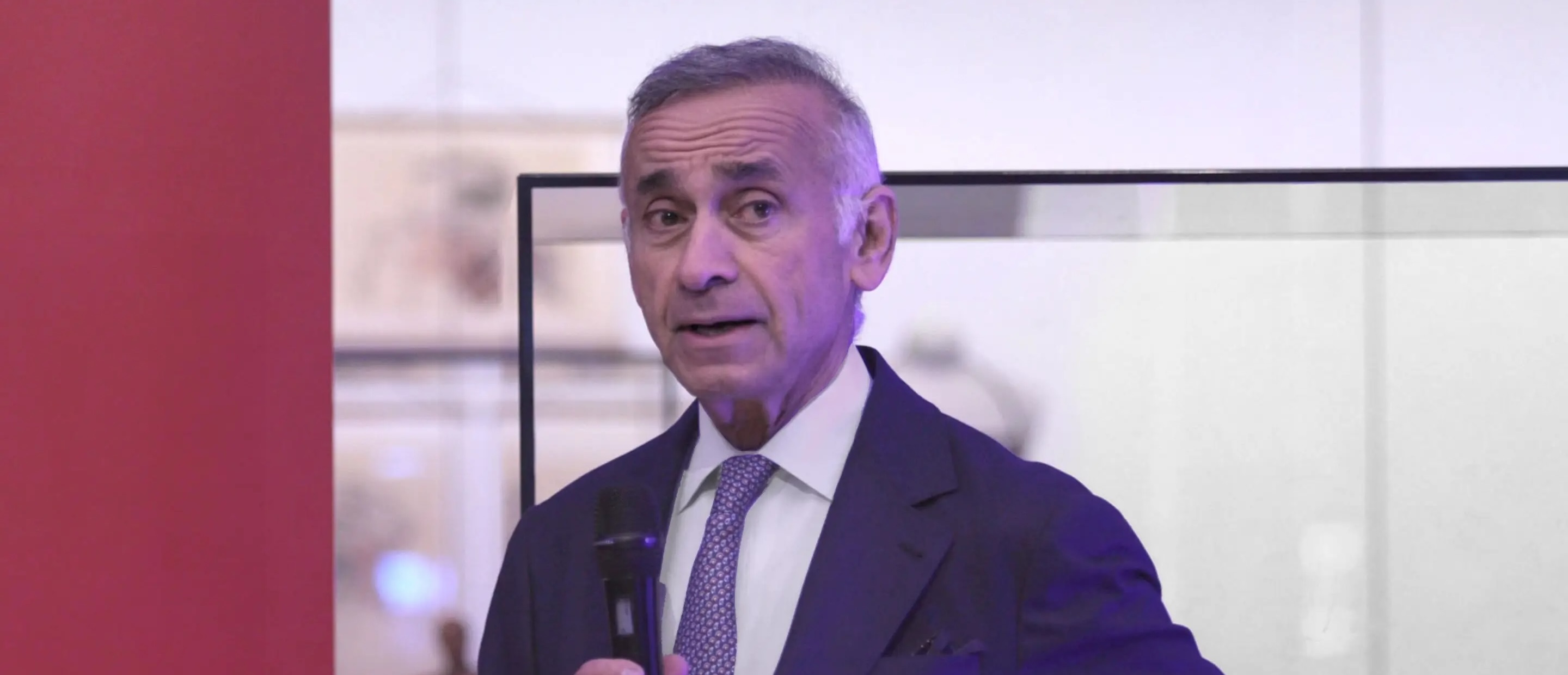Reto Gaudenzi founded the Snow Polo World Cup in St. Moritz in 1985. As the competition enters its 34th year, he explains to Anna Wallace-Thompson how he came to invent this illustrious sport.
Every year, the world’s top polo players and teams gather some 1,800m above sea level in the alpine resort of St. Moritz for the Snow Polo World Cup, referred to locally as “the Wimbledon of snow polo”. The town is the ultimate Swiss getaway, where the sun shines 300 days a year yet there is ample snow for the superb skiing. It is part of the spectacular Rhaetian Railway UNESCO World Heritage site, and chalets here can sell in the region of US$50 million. The heady mix of ideal mountain climate, untouched nature and world-class luxury attracts not only sports lovers but also a glamorous array of celebrities, royalty and wealthy individuals from all over the world.
Snow polo is the brainchild of hotelier and entrepreneur Reto Gaudenzi, who established the Snow Polo World Cup in the alpine resort in 1985. Talk to Gaudenzi for five minutes and his passion for the sport becomes clear, plus his pride in the impact it has had on St.Moritz over the past three decades. The town has a long history of hosting winter sports events – it has been home to the Winter Olympics twice, in 1928 and 1948 – and its dramatic mountain landscape and frozen lake serve as the perfect backdrop. It has long hosted horse-racing tournaments and bobsleighing, with yacht racing on the lake during the summer.
Gaudenzi (whose son is also a player) himself has won the St. Moritz World Cup five times, and it is his passion and dedication that has carried him through. “It’s so important to me that people share the passion that we feel here,” he says. “It is unbelievable how many people the event attracts and how much it has grown since it was founded. It’s the ultimate mix of sport, social life and an extraordinary destination.” Over the years, the organization and technology involved in running the Cup have grown ever more sophisticated, with radar, sonar and heat cameras used to check the thickness of the ice, and the entire operation has grown to generate over 10 million Swiss francs each year for St. Moritz. However, as Gaudenzi told us during his preparations for this year's event, it is the spirit at the heart of the sport that is the key to its success:
How did you become involved in the world of polo?
In the 1970s I was on the Swiss national bobsleigh team, and the polo manager of Sotogrande was on the English team, which was how we first met. When I was assigned to open a hotel in Marbella in Spain, we met again. I already knew how to ride a horse, and I played ice hockey, so polo felt like a natural extension – it just grabbed me. I eventually went to Argentina for an intensive few months to learn it properly, and a year later had a +3 handicap and actually won The Gold Cup in Sotogrande in 1980.
What galvanized you to create snow polo?
I am a St. Moritz native, and we have been holding horse races here on the lake for the better part of a century. Once I started playing polo, I also developed a desire to organize it. In fact, there is a saying that in order to play polo one must be rich or organized (best if you are both). Well, back in the 1980s, I was certainly the latter, if not the former, and putting it on the lake seemed like a natural extension of the sport, as well as the hotel and tourism business I was in. The then tourism director of St. Moritz, Hans Peter Danuser and I put our heads together and that is how the very first Snow Polo World Cup was born in 1985.
Moving the game up into the snow must have required some serious innovations…
We already had the advantage of having staged horse races on the lake, so that infrastructure was in place: preparing the surface of the ice (which needs to be at least 40cm thick), erecting tents, grandstands, and so on. However, polo is different from horse racing, as there is much stopping and turning, the horses have to be secure in their footing so they don’t slip. Also, snow would get caught in their hooves. The solution came from our local blacksmith, who invented a hoof grip, which is basically a piece of leather between the horseshoe and the hoof, which prevents snow getting in between. Of course, this has now evolved to be much more sophisticated, made out of plastic materials, but it was amazing how simple yet important this solution was – a simple piece of leather – to getting the whole thing going.
What about the ball? The temperature and altitude must affect the materials.
Absolutely, and obviously the normal ball used in grass polo is of no use on the snow – it is too small, becomes brittle and shatters upon impact with the mallet. We had to come up with resized polo balls, with two or three air chambers inside, which allow for impact absorption to stop the balls blowing up every five minutes.
Most memorable moment from the inaugural Snow Polo Cup?
It was snowing like heck in 1985 and all the roads were closed. Bringing the horses up the mountain, we had to unload them from their vans and put them on a train – it was an incredible adventure. We had 80 horses in the carriages – imagine the noise of the train – and one handler for every three horses on three-hour shifts just to get them up to St. Moritz. But everybody survived and when we unloaded the train, some of the horses had never seen snow before. They started rolling about in it, and then suddenly all the rest of them joined in. I will never forget the sight of 80 horses frolicking and rolling with such joy in the snow like that. It was unbelievable.
How do the horses adapt to being at that altitude?
It turns out that when it comes to altitude, horses have the same physiological rhythm as humans. On the first day, they’re euphoric – one feels one has a lot of power and energy due to the decreased oxygen levels. However, on the second and third day, energy levels drop as the body acclimatizes, after which it adapts and returns to ‘normal’. We’re very careful to ensure the horses are well looked after and comfortable, which is why we bring them up to St. Moritz a week before the tournament, in order to give them time to acclimatize and rest.
How do you keep the Cup fresh and innovative? What keeps people coming back?
Of course, there’s the destination itself, as well as the climate. People tell me, “We came up here and felt like we just drank two glasses of champagne” – well, which is true, because that’s the low oxygen levels again! So, I mean it, there really is a genuine, physiological feeling of euphoria upon arriving in St. Moritz. It’s also such a unique package, with its position and the dramatic vistas, the fantastic hotels, and great service. Then throw in the thrill of the game itself, the horses, the snow, the sounds, the scents, everybody coming together each year to be a part of it, and the sheer joy and love of the sport that unites people – it’s a heady cocktail.
The Cup has become an important revenue generator and tourist attraction for St. Moritz itself, which is now synonymous with snow polo. How do you see this event’s positive impact across the rest of the year?
It’s a chain of events, isn’t it? We’re a deluxe snow-sport destination already, and the addition of the Snow Polo World Cup and its subsequent success has led to five deluxe hotels, luxury boutiques, and a whole host of other businesses. The events that revolve around the snow polo – from the tournaments themselves to the parties – create an atmosphere of good will and good living, which makes people want to indulge in all we have to offer. And once the snow melts, the lake and the town are also extremely beautiful in the summer…
The 2018 Snow Polo World Cup sees some firsts – including the entry of a team from Azerbaijan.
Indeed – we are excited about welcoming the Azerbaijani team, which is also unique in that it’s the only team that’s sponsored by its own country, not by a brand, as it were. I founded The Polo World Cup in Azerbaijan five years ago, so it’s very exciting to see the players coming to St. Moritz now. Azerbaijan is, in many ways, the cradle of polo, as it was part of the Persian empire, where polo was played for thousands of years and known as chovgun.
This is also the first time ever that St. Moritz welcomes two female polo captains. Do you feel snow polo, or polo in general, has been a male-dominated sport to date?
I am so very excited to welcome St. Moritz regular, Melissa Ganzi, the famous American polo player, and the formidable Janna Bandurko from Russia as two female captains this year. There are so many fantastic and talented female players in this sport, and their number has increased over the past few decades, but there are surely not enough, so hopefully this is changing.
Your son Tito is also an accomplished polo player – how is the sport different for him to what it was like for you back in the 1970s?
When we played polo, while we were in great physical condition, it was nothing compared to the players today – they’re real athletes! We were, too, but we would never really leave the bar until it closed, as it were. Today the sport is far more physical, much more competitive, and the horses are bred to a whole different level. Add to that the more sophisticated preparation of the playing fields and you have a game that is a whole lot faster than it was when I started 34 years ago.
What’s next?
My philosophy is, now that I’m not 22 anymore, that I’d like to look at what I’m already doing, and make sure I’m doing it right. I’ve turned down several offers to open new tournaments because the circumstances weren’t right. This isn’t just a business, it’s a passion as well, and in many ways it’s more important than the business side of things. There are some interesting projects in the wings waiting to be announced, including something big in Kazakhstan, but in general my focus is on consolidating and keeping the wonderful energy and momentum we have achieved here.
Anna Wallace-Thompson is an arts and culture writer based in London.










